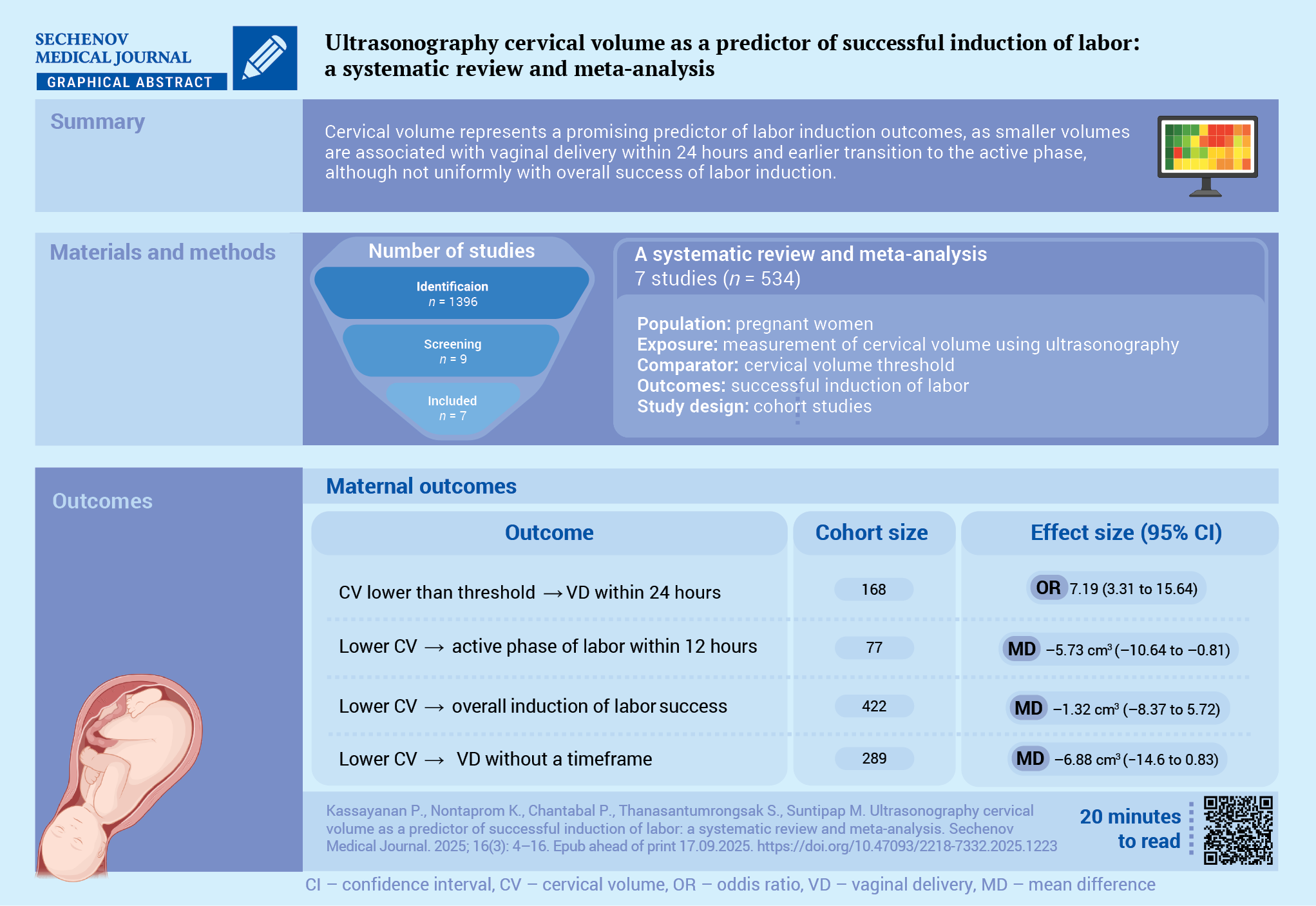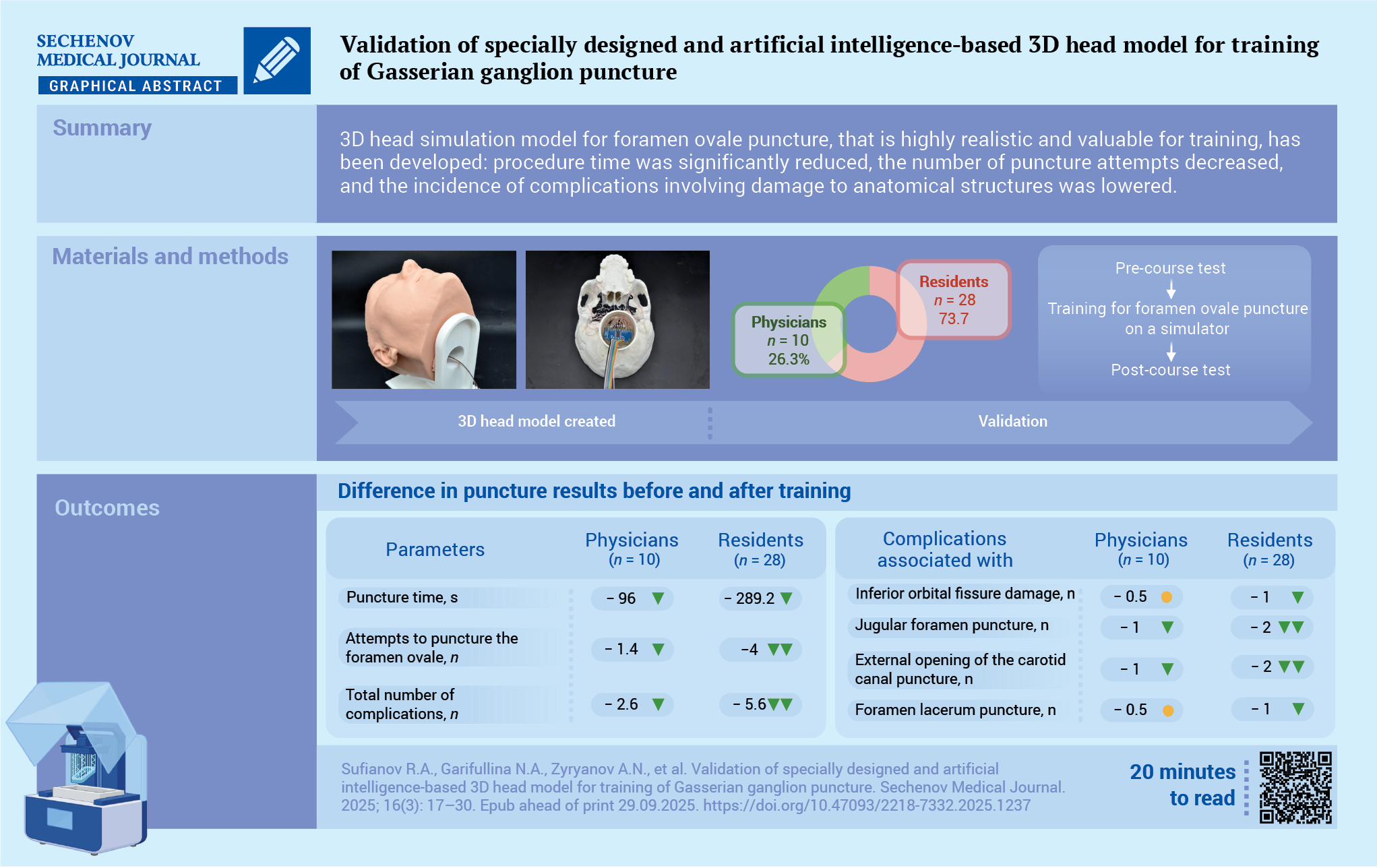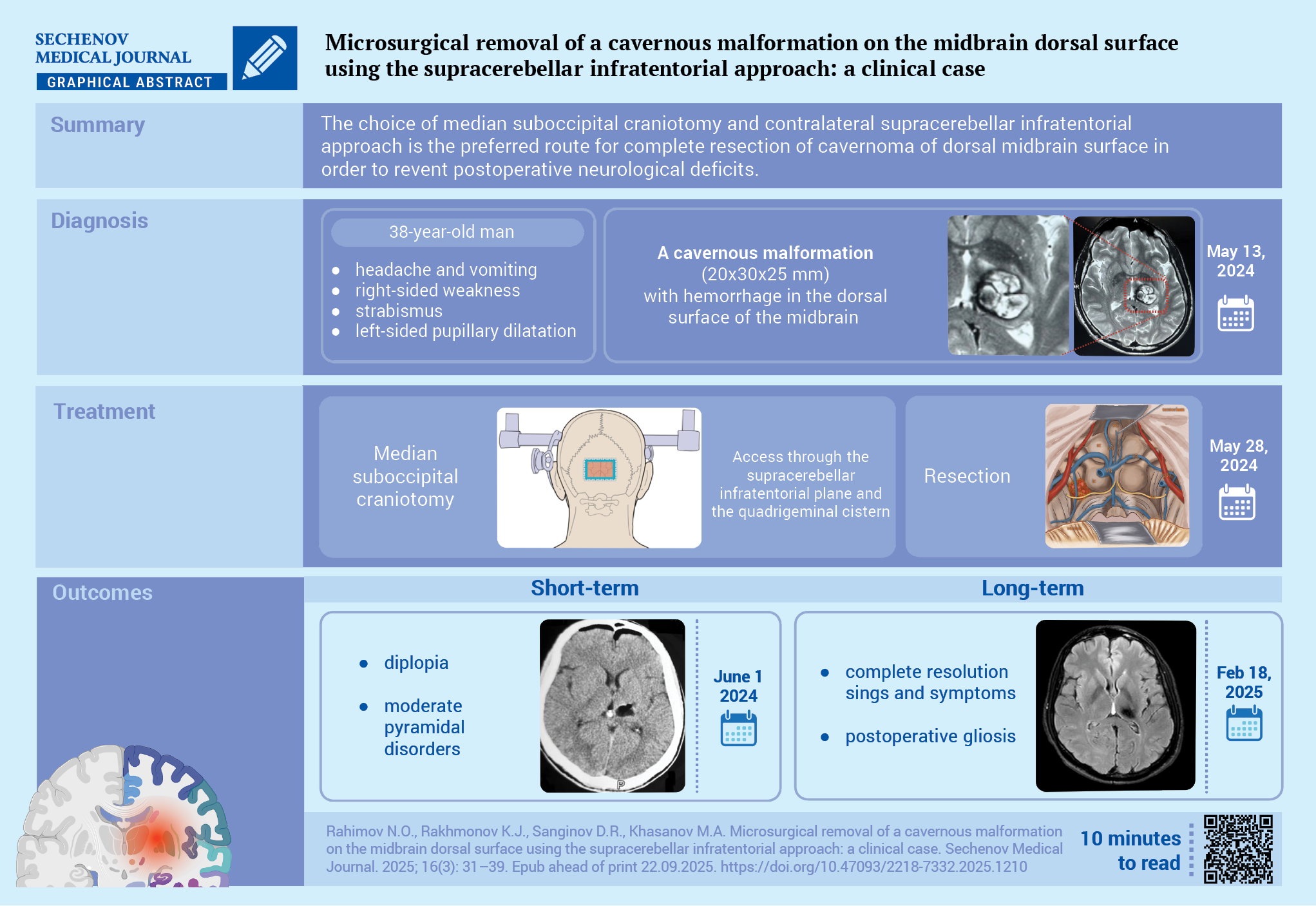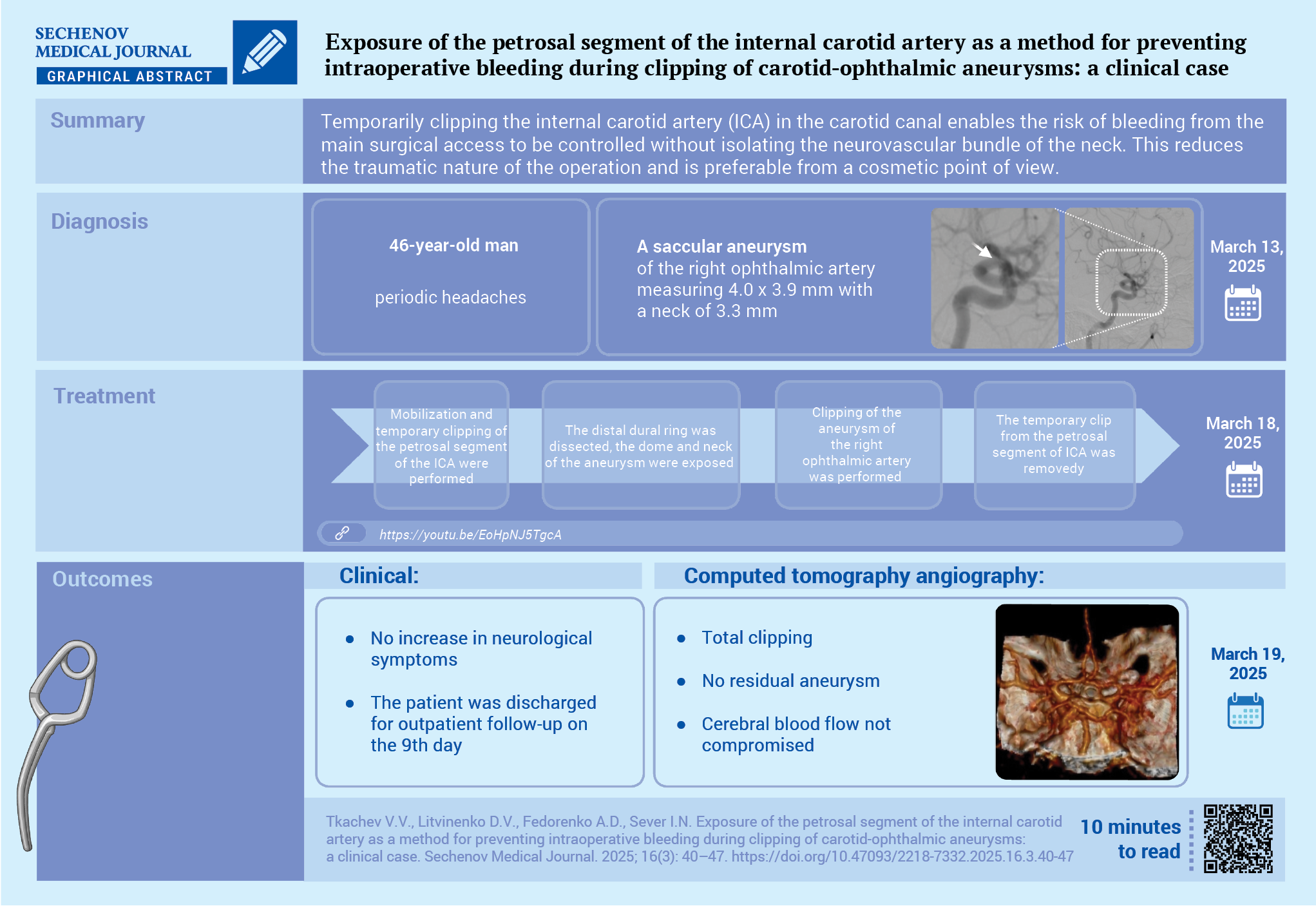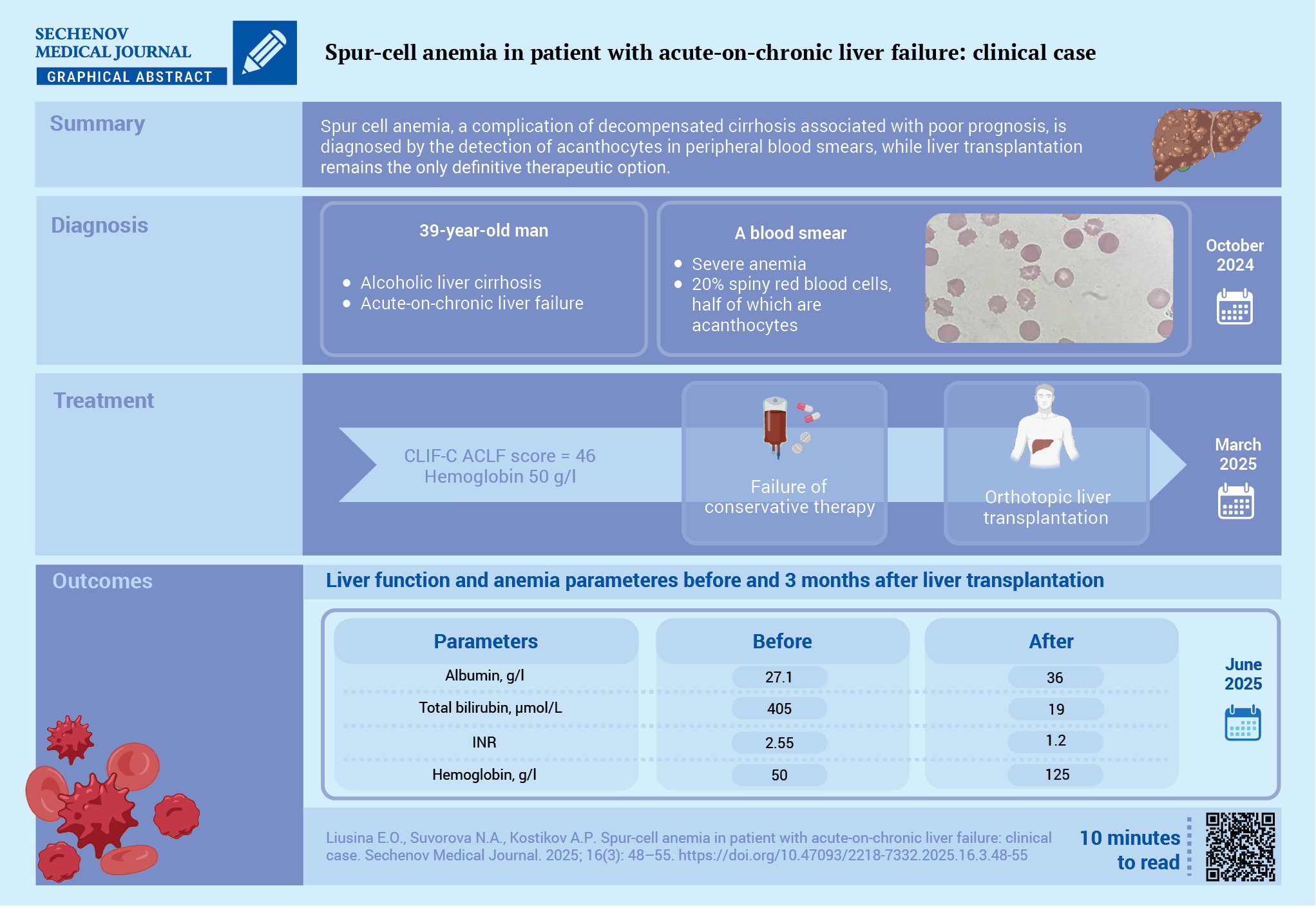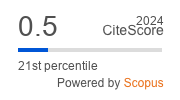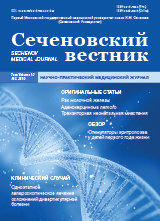
The Sechenov Medical Journal is a scientific and practical peer-reviewed journal, the official publication of Sechenov University.
The Journal has been published since 2010 with a frequency of 4 issues per year and is intended for the health professionals.
The journal is ranked at Level 1 on the Unified State List of Scientific Publications, also known as the 'White List'.
The Title is included in the Russian Science Citation Index (RSCI) collection, based on the Russian Index of Science Citation(RISC) database and is in the Scopus database.
Sechenov Medical Journal publishes original articles, reviews, and clinical cases, covering a wide range of issues in biomedical sciences, fundamental and clinical medicine and concerned with important clinical and basic research in the field of:
- cell biology,
- pathological physiology,
- internal diseases,
- obstetrics and gynaecology,
- oncology, surgery
- neurosurgery.
Publication time frames:
5 days - first decision (accept for review or reject the manuscript)
40 days - average duration of the review phase
99 days - from manuscript submission to publication (average)
20% - of all manuscripts submitted during the year were accepted for publication
Mass media state registration certificate PI № ФС77-78884 dated August 28, 2020, issued by the Federal Service for Supervision of Communications, Information Technology and Mass Media (Roskomnadzor).
Current issue
ОBSTETRICS AND GYNECOLOGY
NEUROSURGERY
INTERNAL MEDICINE
Announcements
2025-12-19
The Sechenov University scientific journal portal has begun operating, and it is available to users.
The ELPUB website now features a portal for scientific journals (PORTAL) published by Sechenov University, designed to promote and increase the accessibility of scientific information published in the journals of its own Publishing Center. The University currently publishes four journals:
- Sechenov Medical Journal - a scientific and practical peer-reviewed journal, published since 2010, with a frequency of four issues per year.
- National Healthcare (Russia) - founded in 2020 by the Ministry of Health of the Russian Federation and the I.M. Sechenov First Moscow State Medical University (Sechenov University), published four times a year.
- The BRICS Health Journal is a journal designed to bring together authors from BRICS countries and beyond. It has been published since 2024, with four issues per year.
- The Eurasian Journal of Life Sciences is an international scientific platform that brings together researchers and clinicians in the field of biomedicine. It was launched in 2025.
The PORTAL offers a unified search function that allows users to search for publications by author or topic in four journals at once. A convenient interface listing new publications and popular articles is already in operation.
Key features and benefits of the Sechenov University PORTAL:
Single point of access: All university journals are structured on a single modern technology platform.
Open science: Full-text open access to articles, which is in line with global trends and increases the citation rate of research.
Convenience for authors: A simplified and standardized system for submitting manuscripts, tracking publication status, and interacting with the editorial office.
Convenience for readers: Modern interface, quick article search, and the ability to subscribe to new issues.
Increased visibility: Concentration of scientific content, strengthening the presence of university journals in the international information space.
We invite authors to submit their articles, familiarize themselves with current publications, and join the scientific discussion on the pages of our journals.
The editorial board of Sechenov Medical Journal will monitor and be the first to inform its readers about new features of the PORTAL.
Go to the portal.
| More Announcements... |



